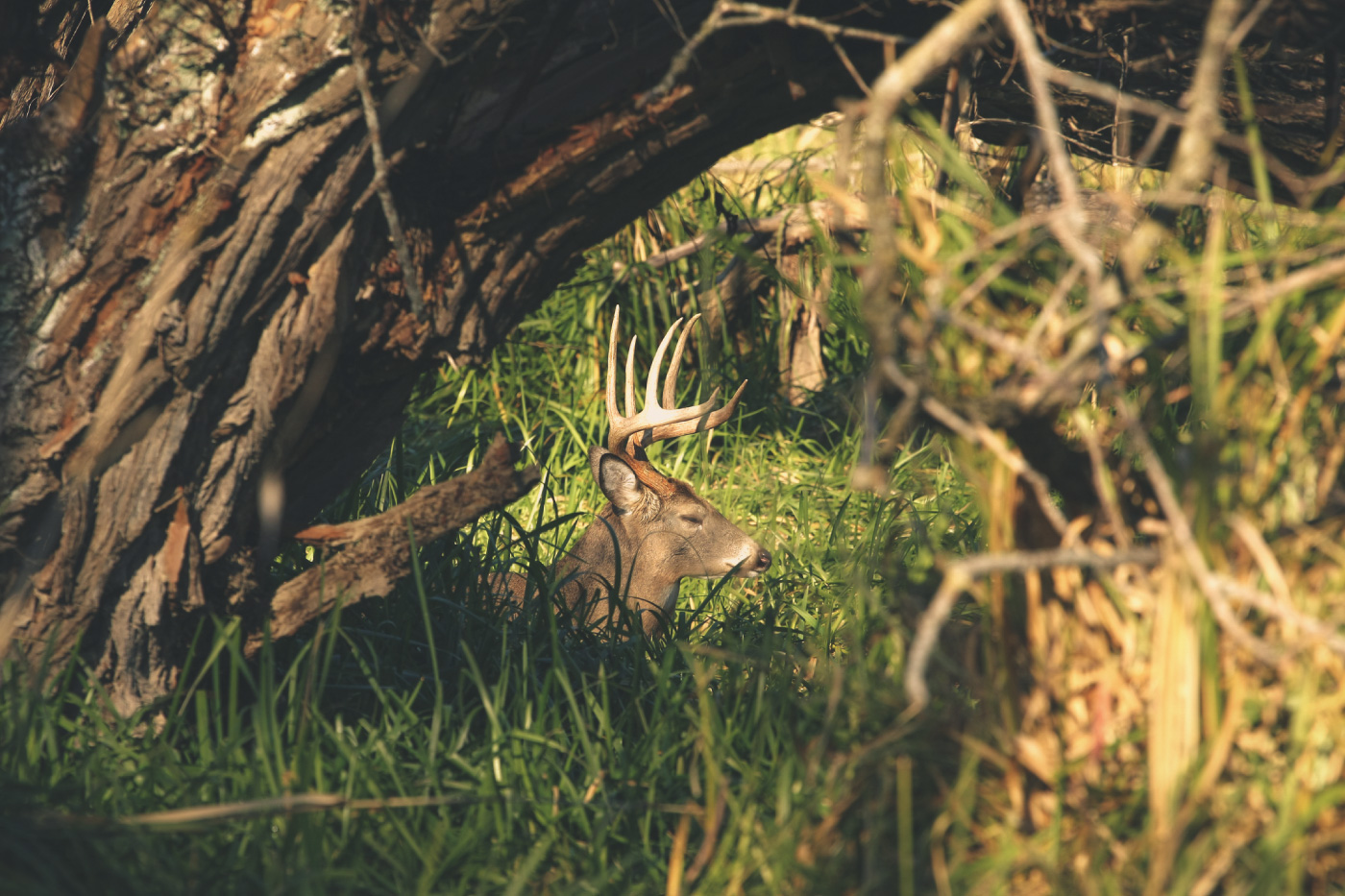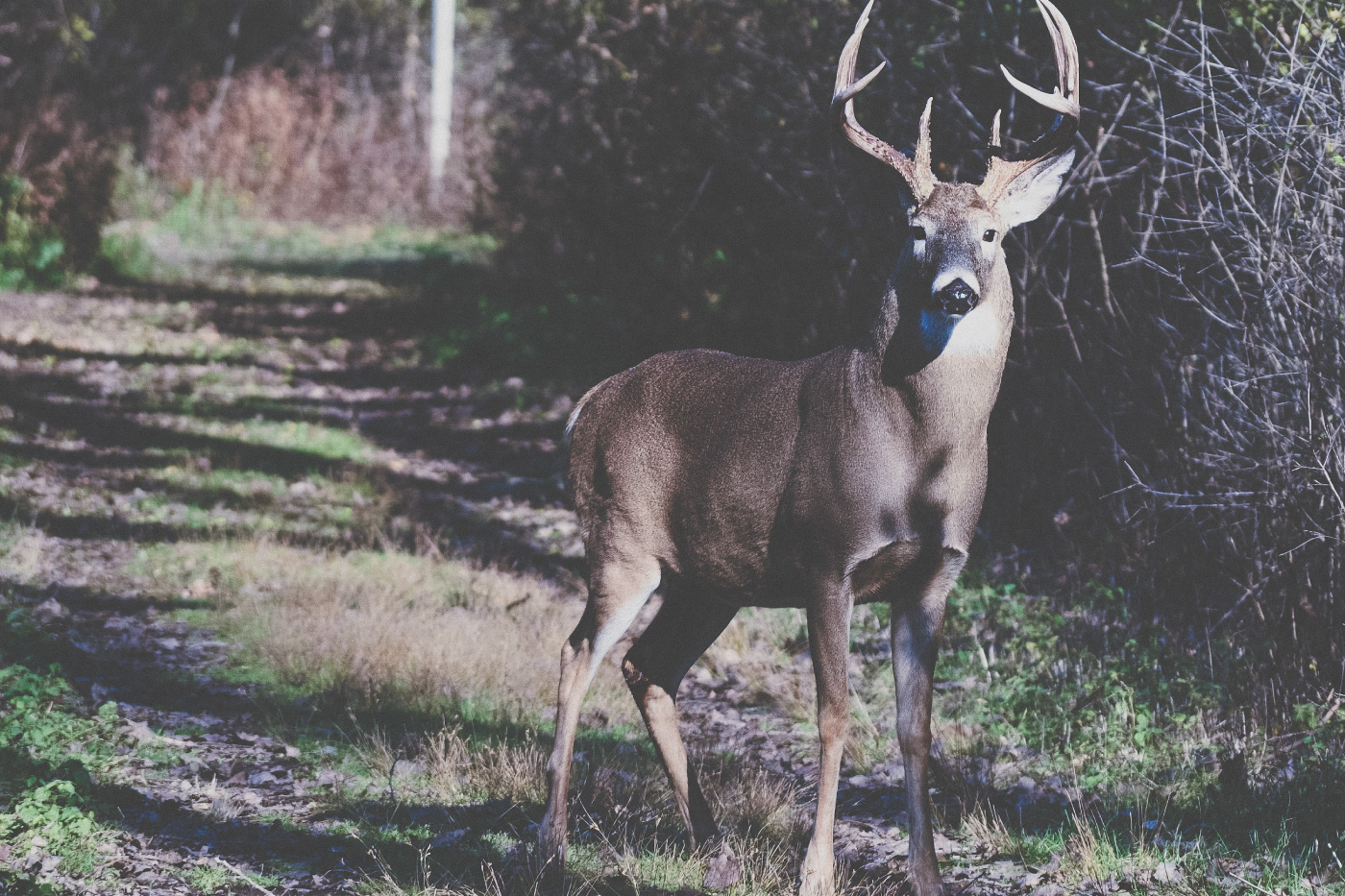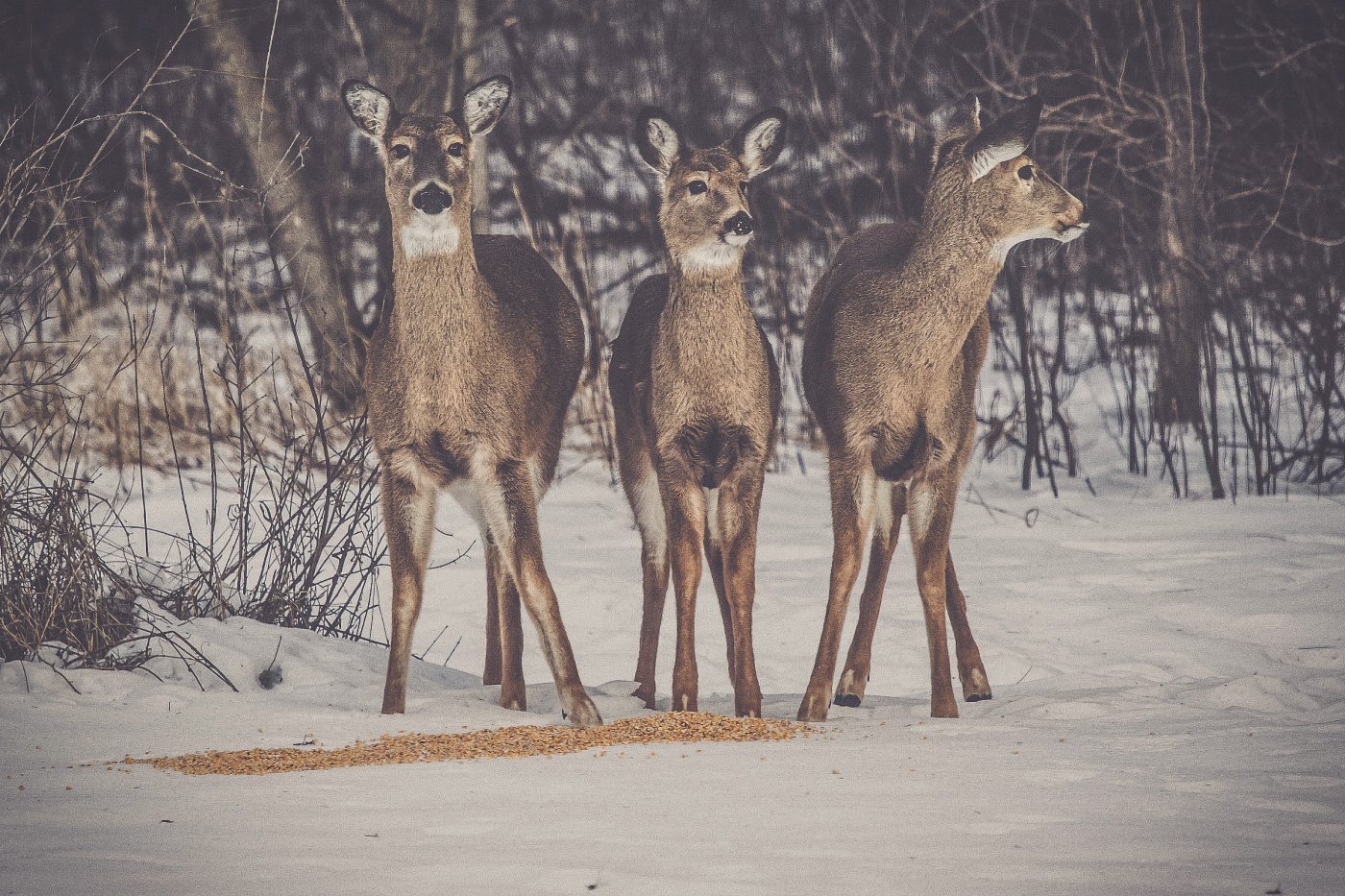Home » News » View From a Suburban Deer Bed
View From a Suburban Deer Bed

A.J. DeRosa founded Project Upland in 2014 as an excuse…
A suburban deer bed is a lot more complicated than its rural counterpart.
Biology, mainstream hunting media, and common belief all give us a very specific view of what whitetail bedding should look like, be it a doe or big buck bed. But what about a suburban deer bed? We look into thickets with the conviction that our suburban giant beds there. Or maybe he lives on those large inclines where a mature buck could see hundreds of yards off. If you live in big woods or farm country, you are probably right. If you hunt in suburban America, you are probably wrong.
I have found one common trait among all the biggest bucks I have put on the ground. These suburban deer bedded where they could always watch humans. The psychology is simple—if they can see what we are doing at all times, they feel safer.
I have found countless beds just yards off back lawns, the sides of houses, and busy roads. I have even found mature bucks bedding in the wide open within viewing distance of walking trails. They watched my every step and they knew that if I took a few steps off the trail, I was a predator.
Suburban deer, particularly whitetail does, have a highly adapted understanding of human predatory behavior. Evolution has taught this animal through years of conditioning that the highway median, the basic hedge row, or the small shrub island in a commercial parking lot are as safe as you can be from predators.
This basic, but fascinating, theory becomes more essential as the years go by. As the young learn to adapt, these deer will bed closer and closer to areas of high human activity.
The whole idea here is that you should inspect that thicket you have been so sure of in the past. Consider that the more you come into an area, you may not be pushing a buck out. Rather you might just be forcing the buck to more proactively watch you. Running could be far more dangerous for them than holding tight.
We suburban hunters need to think of these extremes if we want to become more successful hunters. The theory of suburban deer adaptation drives our entire hunting methodology. They are learning around the clock all year and passing their learning on from generation to generation. All we need to do is catch up.
A.J. DeRosa founded Project Upland in 2014 as an excuse to go hunting more often (and it worked). A New England native, he grew up hunting and has spent over 30 years in pursuit of big and small game species across three continents. He started collecting guns on his 18th birthday and eventually found his passion for side-by-side shotguns, inspiring him to travel the world to meet the people and places from which they come. Looking to turn his passion into inspiration for others, AJ was first published in 2004 and went on to write his first book The Urban Deer Complex in 2014. He soon discovered a love for filmmaking, particularly the challenge of capturing ruffed grouse with a camera, which led to the award-winning Project Upland film series. AJ's love for all things wild has caused him to advocate on the federal and state levels to promote and expand conservation policy, habitat funding, and upland game bird awareness. He currently serves as the Strafford County New Hampshire Fish & Game Commissioner in order to give back to his community and to further the mission of the agency. When those hunting excuses are in play, you can find him wandering behind his Wirehaired Pointing Griffon in the mountains of New England and anywhere else the birds take them.



